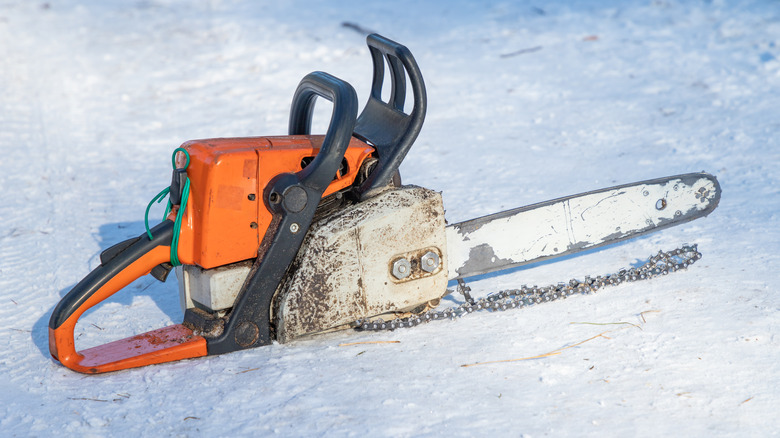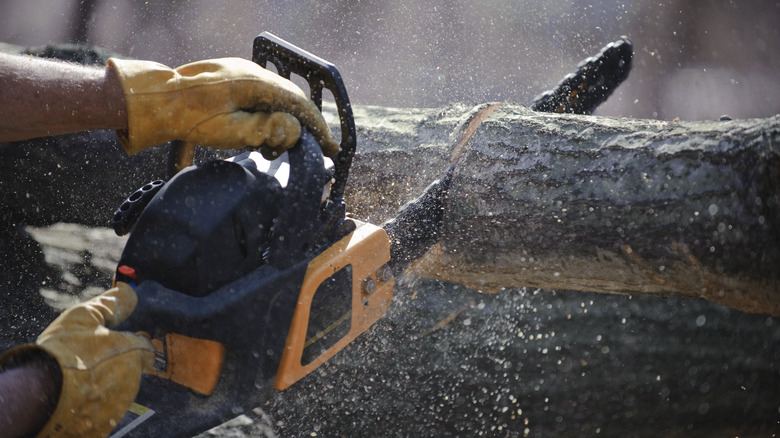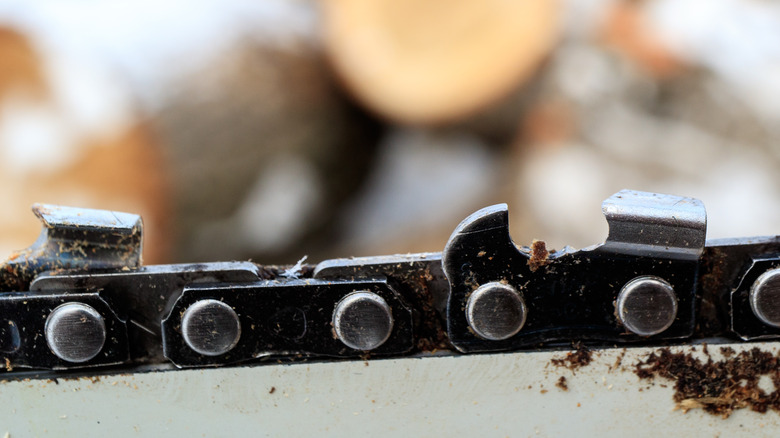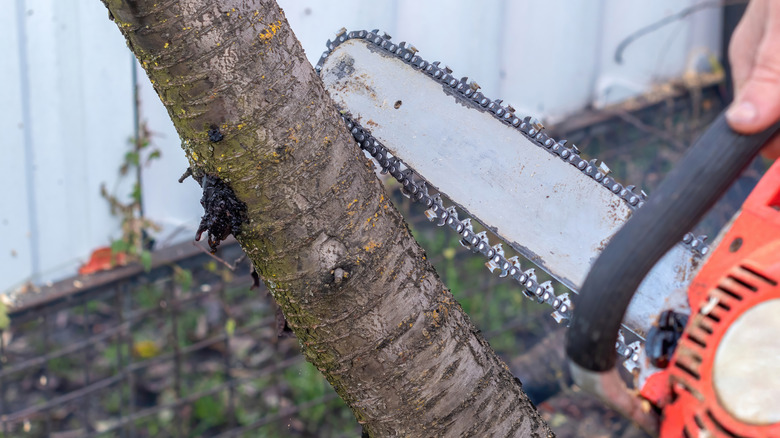
Qwart/Getty Images
When it comes to handheld tools of destruction, the chainsaw is a classic. With its mighty roaring engine and whirling blades, powered by fuel or electricity, a chainsaw in its prime can effortlessly slice through even the densest logs. Note, however, how we say «in its prime.» While a brand-new, out-of-the-box chainsaw can cut with confidence, time and usage have a way of wearing things down.
A chainsaw may be a mighty cutting implement, but just like any piece of hardware, it’s not indestructible. Chomping through log after log puts a lot of wear and tear on the teeth of the chain, and while you can periodically sharpen them to get some of that luster back, sooner or later, it’ll reach the end of its proverbial rope. The question, then, is how can you tell when your chainsaw chain has sliced its last spruce? There are a few signs you should be on the lookout for that indicate it’s time for a replacement: difficulty cutting, damaged teeth, and poor performance.
Visible difficulty with cutting

Edelmar/Getty Images
The first and most obvious sign you should be mindful of is difficulty when cutting. Your chainsaw is supposed to be able to cut through wood without too much trouble, so if it’s visibly chugging when trying to perform a task it could normally handle, that’s a red flag.
When the teeth on your chainsaw are near their breaking point, they may start to wobble when in use, or otherwise become deformed from excess pressure. Either way, this can result in jagged, uneven cuts through wood. If it’s just the teeth, a quick sharpening might fix this, but if the chain itself has gone loose and you can’t get it taut again, it’s officially out.
You should also be on the lookout for visible smoke and fumes. While a little bit of puffing is expected of a chainsaw, if it’s belching smoke, even when it’s oiled and properly aligned, that means some part of it is hindering the cutting process. Odds are good that something is the chain.
Worn, damaged teeth

Andrei Metelev/Getty Images
The teeth on your chainsaw’s chain are what allow it to devour logs with the voracity you expect, but this is also why the teeth are the chain’s most vital components. Not unlike your own teeth, your chain’s teeth will gradually wear out with repeated usage. Even if they’re made of a powerful, sturdy metal, they can’t handle infinite punishment.
If you’re concerned about the state of your chain’s teeth, take a close look at the wear markers. Most commercial chains have distinct lines printed on the sides of the teeth indicating how much they can be worn or sharpened before you’re in the danger zone. If the teeth have been worn all the way down to the wear marker, you can’t sharpen them anymore, at least not without risking them flying off.
Speaking of, if you’re pushing your chain past its limits, the teeth may start to chip off, falling out mid-cut. If you inspect the chain and find empty spots where teeth should be, it’s probably time for a new one.
Poor performance

I_lunaart/Getty Images
Even if you can’t spot any obvious deformities in the chain or problems with the chainsaw’s cutting, a worn-out chain can have other, subtler knock-on effects on the tool’s overall performance. For example, when you make the first incision into a log with your chainsaw, the spin of the chain is supposed to automatically draw the rest of the device in for the cut. If you hold the blade against a log, but need to physically force it in with your own power to get a cut going, the chain might have subtle damage or general weakening.
Similarly, that first cut should be a nice, clean one. You hold the blade there, spin the chain, and it cuts straight. If your chainsaw is rattling around a lot or bouncing off the wood, the teeth of the chain might be chipped or warped, causing the blade to ricochet instead of cut. It becomes less like cutting through wood with a chainsaw and more like sticking your finger in a pinwheel.
Whatever the cause, when your chainsaw chain isn’t functioning properly, don’t delay. Get it replaced and get your tool back to work.